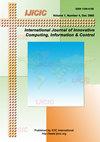提出了一种基于多小波变换的深度伪造检测方法
IF 1.1
Q4 COMPUTER SCIENCE, ARTIFICIAL INTELLIGENCE
International Journal of Innovative Computing Information and Control
Pub Date : 2023-09-13
DOI:10.11113/ijic.v13n1-2.420
引用次数: 0
摘要
人工智能(ai)制作的视频看似真实,实则不然。在制作DeepFake视频时,经常使用换脸方法。使用假视频时对技术的滥用,尽管一开始很有趣,但这些视频在某种程度上是人眼可识别的。然而,随着机器学习的进步,制作深奥的假视频变得更简单了。现在几乎不可能把它和真实的视频区分开来。使用gan(生成对抗网络)和其他深度学习技术,DeepFake视频是一种输出技术,它可能会误导人们认为某些东西是真实的,但实际上不是。本研究利用多小波变换分析图像边缘的类型及其清晰度,开发了一种模糊不一致检测系统。有了这个功能,它可以评估视频中面部区域是否被遮挡。因此,它将检测虚假视频。本文回顾了DeepFake检测技术,并讨论了如何将它们组合或改变以获得更准确的结果。该方法的检出率达93.5%以上,是相当成功的。本文章由计算机程序翻译,如有差异,请以英文原文为准。
Proposed DeepFake Detection Method Using Multiwavelet Transform
Videos made by artificial intelligence (A.I.) seem real, but they are not. When making DeepFake videos, face-swapping methods are frequently employed. The misuse of technology when using fakes, even though it was fun at first, these videos were somewhat recognizable to human eyes. However, as machine learning advanced, it became simpler to produce profound fake videos. It's practically impossible to tell it apart from actual videos now. Using GANs (Generative Adversarial Networks) and other deep learning techniques, DeepFake videos are output technology that may mislead people into thinking something is real when it is not. This study used a MultiWavelet transform to analyze the type of edge and its sharpness to develop a blur inconsistency detecting system. With this capability, it can assess whether or not the facial area is obscured in the video. As a result, it will detect fake videos. This paper reviews DeepFake detection techniques and discusses how they might be combined or altered to get more accurate results. A detection rate of more than 93.5% was obtained, which is quite successful.
求助全文
通过发布文献求助,成功后即可免费获取论文全文。
去求助
来源期刊
CiteScore
3.20
自引率
20.00%
发文量
0
审稿时长
4.3 months
期刊介绍:
The primary aim of the International Journal of Innovative Computing, Information and Control (IJICIC) is to publish high-quality papers of new developments and trends, novel techniques and approaches, innovative methodologies and technologies on the theory and applications of intelligent systems, information and control. The IJICIC is a peer-reviewed English language journal and is published bimonthly

 求助内容:
求助内容: 应助结果提醒方式:
应助结果提醒方式:


